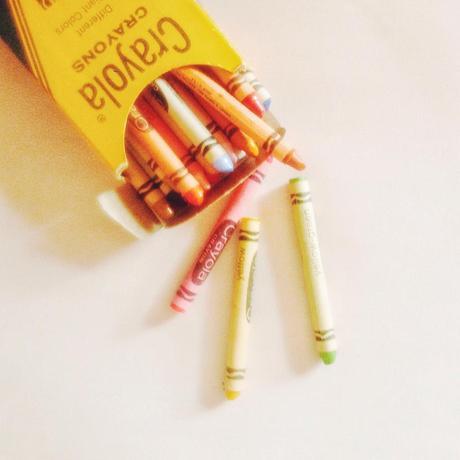Welcome to 74 Lime Lane. Take a look around. You'll find popular categories in the sidebar on the right. If you like what you see you might want to subscribe to the RSS feed and the regular Lime Time newsletter. Thank you for visiting!

If you search this blog or my flickr stream, you will realise ~ I have a bit of a thing for Crayola.
The above was my photo for “childhood” in this month’s photo-a-day challenge [and we won't speak of my present status on that challenge].
But it also gave me the perfect opportunity to share this, from one of my favourite sites ~ Today I Found Out.
The word “Crayola” was originally thought up by Alice Binney. Binney, a one-time school teacher, combined the French word “craie”, meaning “chalk”, with “ola”, shortened from the French word “oléagineux”, meaning “oily”. Oléagineux derives from the Latin “oleāginus”, which is the adjective form of “olea”, meaning more or less “olive tree”.
The French “craie” comes from the Latin “creta”, which also means “chalk”, and, in addition, can mean “clay”. Craie is also where “crayon” gets its leading “cray”, though the word “crayon” existed long before Crayola crayons were invented. It first appeared around the 16th century in the French language and meant “chalk pencil” and later just shortened to “pencil”, as it still means today.
Hence, given the origin of the words, “Crayola crayon” more or less just means “Oily Chalk Pencil”.
Oily chalk pencil ~ doesn’t quite have the same ring to it!
